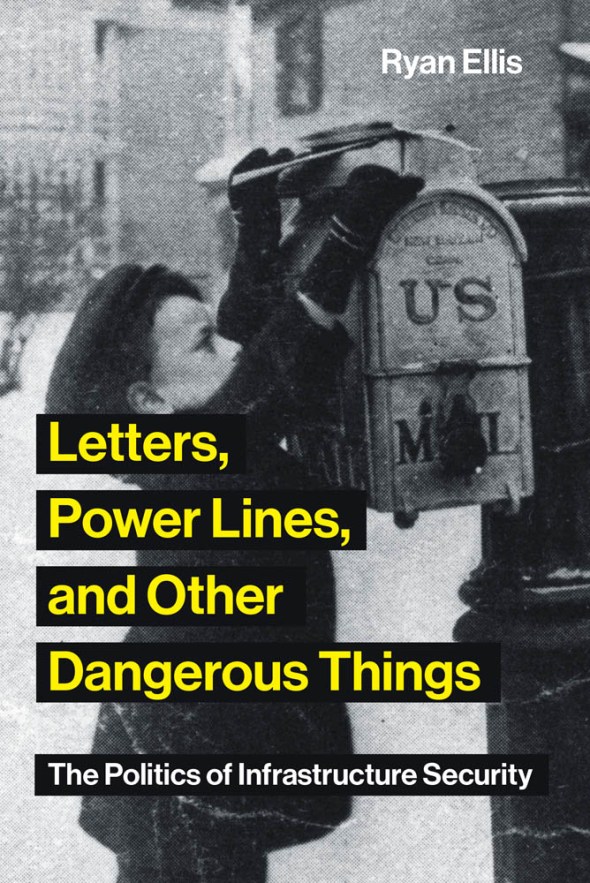Delivery workers step up during the COVID-19 pandemic

Along with the sacrifices that healthcare workers are making now to help stem the tide of the COVID-19 pandemic, Ryan Ellis urges us to not forget about letter carriers and package handlers who remain on the job during a worldwide health crisis to deliver an essential service.

Courtesy photo Ryan Ellis
“From Amazon to FedEx to UPS to post office workers, it’s important that we acknowledge all these folks who we often take for granted,” says Ellis, an assistant professor of communications studies at Northeastern and author of the recently published book about the enormous infrastructure challenges the U.S. faced following the terrorist attacks of 2001.
“While not nearly at the same level of the sacrifices that nurses and doctors are making at the frontlines of this pandemic,” says Ellis, “what the delivery people are doing, delivering millions of essential pieces of mail and packages to us without the benefit of social distancing, is vital and in its own way heroic when you stop to think about it.”
Ellis, whose research and teaching at Northeastern focuses on topics related to communication law and policy, infrastructure politics, and cyber security, has a personal interest in the safety and overall well-being of delivery workers during the COVID-19 health crisis. He was a letter carrier in Brookline, Massachusetts, in 2003 and remembers the lingering psychological effects the anthrax terrorist attacks had on post office workers.
In his book, Letters, Power Lines, and Other Dangerous Things: The Politics of Infrastructure Security, Ellis recalls his first day on the job as a letter carrier and observing a post office coworker putting on thick latex gloves to protect himself from potential unknown health threats on or in the mail.
“After the 2001 anthrax attacks, postal workers were anxious,” Ellis says. “Spores of anthrax could—and did—escape from sealed letters during processing and handling within postal facilities. Postal workers were at risk. A number of workers became sick, and a few died as a result.

Book cover courtesy Ryan Ellis
“At the same time, there was a real pressure to keep working and deliver the mail,” Ellis continues. “The postal system—then and now—was put in a precarious situation during a health and economic crisis.”
With more people staying home now and ordering more things online rather than risk spreading the coronavirus by going out, Ellis says, it’s inevitable that competing interest groups are going to clash.
On one side are those that are pushing for workplace safety and the overall protection of workers such as delivery people.
On the other side are those operating high-volume infrastructure systems, such as the postal service, that are being pressured to keep commerce running at full capacity, no matter what.
Additionally, infrastructure security and safety always balance competing aims, says Ellis. He points out that prior to 2001, decades of deregulation in the U.S. transformed infrastructure by prioritizing efficiency at the expense of resilience.
“After, 2001, the safety and security of postal workers was traded away in favor of cheap and fast mail,” says Ellis.
“It will be interesting to see if anything changes,” Ellis says about the COVID-19 pandemic. “Will postal workers, delivery workers, and other workers that are critical to the day-to-day operation of infrastructure be protected or not?”
Ellis likes to believe that working conditions will improve for the postal workers but struggles to figure out how. He points out that prior to this year’s health crisis, the U.S. Postal Service was already dealing with its own growing economic crisis.
Its financial condition has gradually deteriorated since letter volumes peaked in 2001, prior to the Sept. 11 terrorist attacks and the anthrax attacks, he says, and while package delivery has made up some of the difference, the decline of letters and increasing number of delivery points have forced the Postal Service to nearly max out its credit line with the U.S. Treasury.
Ellis fears that the U.S. Postal Service “could go bust as early as this summer” without government help.
“The fact is that when this COVID-19 pandemic crisis is over, the Postal Service is still going to really matter to a lot of people,” Ellis says. “They deliver billions of medications every year. They deliver everything we need to places where no one else will go. Mail is a lifeline.
“The public needs to realize how important these delivery people are before a crisis, during a crisis, and after a crisis.”
For media inquiries, please contact media@northeastern.edu.





